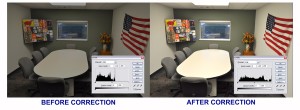
Here's the dilemma - you just bought a pricey DSLR digital camera with more megapixels than days in the month so you're expecting great shots every time, right? Wrong. Time and again you preview your pictures on the camera's LCD and on your home or office LCD and they look wonderful. You print them out on your inkjet using premium ink or paper and stare in abject horror at the dark, muddy mess that looks nothing like what you see on the screen. What gives? Is the camera defective? Are your photo-taking skills sub-par? Most often the case it's none of the above.
Turns out, you're not alone in this. Millions of photographers new to digital or used to point-and-shoot simplicity have wondered where the went wrong, and are even more puzzled when the same pictures are sent to a discount photo processing service or even a store while-you-wait kiosk and they print as expected. What gives?
The answer is quite technical and involves terms such as image sensor and gamma and levels adjustment and would likely bore all but the most die-hard photo enthusiast if I delved into the details of the problem and it's solution. But the answer can be summarized effectively without the need for a technical manual and here it is:
Your fancy camera is too smart for it's own good.
Whenever you point that DSLR at your subject and leave the settings on AUTO, you're turning on the auto-pilot and you might not like where the camera takes you. While any decent DSLR can take incredible images, the full auto mode allows the camera to set it's own f-stop and aperture and other important details. While this can and does work well for scenes that are well and evenly lit, the automatic mode is limited by computer logic in more challenging shots, such as indoor and with the use of built-in flash. The result is often an image that may look fine on a bright LCD, but prints as a mass of dark shapes if not corrected. Think of how a Lite-Brite box looks when switched on and lit from behind... then remember what it looks like when switched off.
By correction, I refer to a simple technique that any decent photo editing software should have. Many programs, such as Photoshop, have one-button contrast and brightness adjustment routines that are a snap to use. However, my recommendation for anyone who processes or prints their own photographs is
Photoshop Elements. This inexpensive (under $100) program is feature-rich and takes the need for expertise out of the equation and automates some of the more complex Photoshop tasks for ease of use. With Elements, you can make virtually any photograph you take look more professional with very little effort or skill level. Of course, photo printing kiosks and professional labs provide this service automatically, as their main business is printing your pictures.
Here at AlphaGraphics West End, we routinely come across the "dark print" phenomenon and often times our customers are frustrated by the difference between what they see on screen and what they see on paper. We're asked why an inexpensive camera can take a picture that requires little adjustment while the larger more professional DSLRs seemingly cannot. The answer to this riddle can be surprising. Point-and-shoot cameras have fixed or limited zoom lenses and much smaller image sensors. Simply put, they are simpler in design and function and are intended for non-professionals or amateurs to simply press a button and capture a scene. The overall quality suffers at the expense of ease of use.
The advice we are giving to anyone who may have encountered dark printing for photographs is to invest in a photo editor and become familiar with processing their pictures prior to output. Alternatively, AlphaGraphics West End can provide basic photo correction for a reasonable additional cost when an order for photo printing is placed. Either way, we guarantee that the results will meet or exceed your expectations.